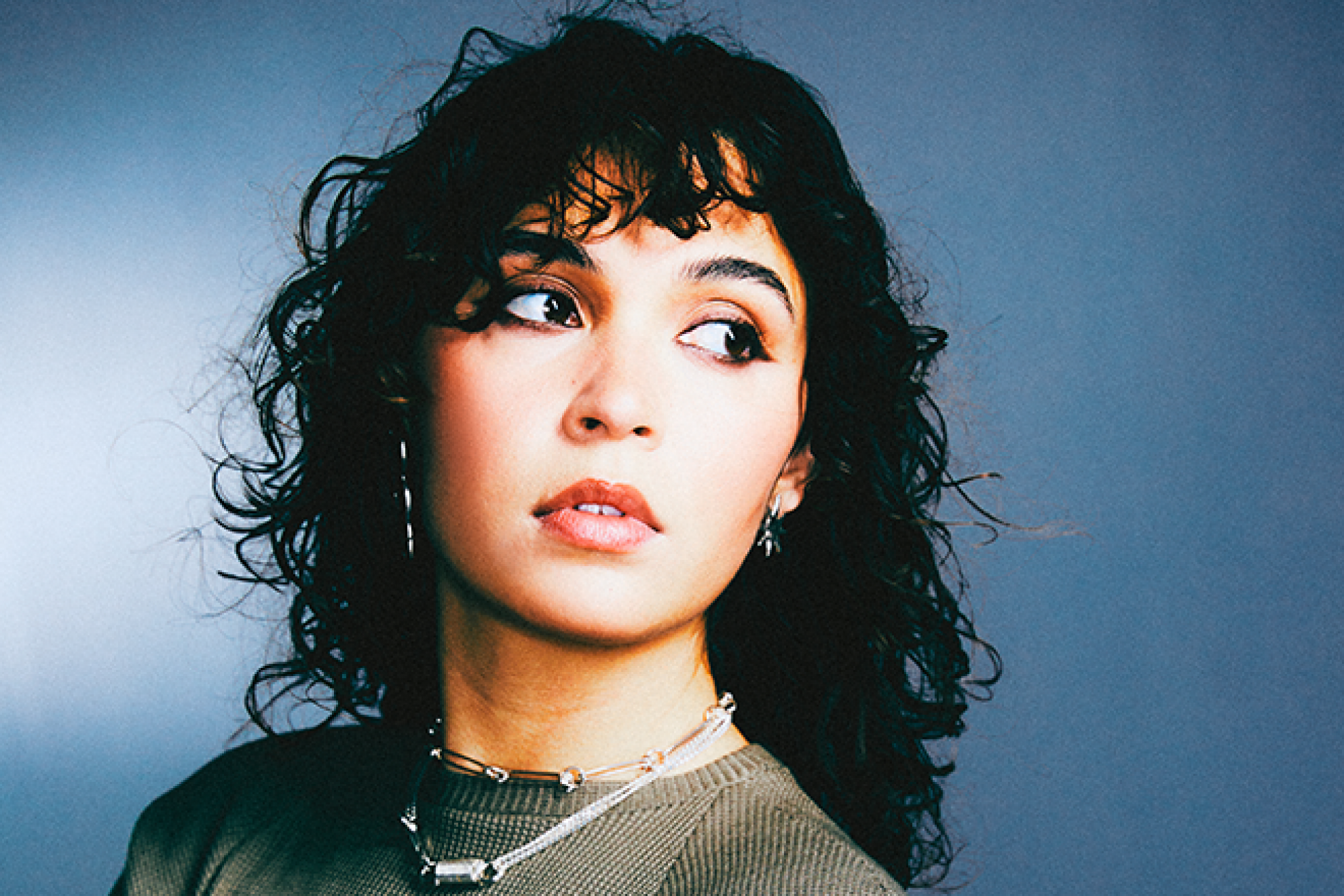 COMMENT
COMMENT
Claire O'Brien's journey with hearing damage
The upcoming Mulubinba artist shares her experience with Tinnitus & Hyperacusis.
Claire O’Brien (she/her) is the founder of Ode Label & a resident on Area 3000 Radio. Based in Mulubinba/Newcastle, Claire’s thus far short but incredibly blossoming career as a DJ has seen her feature on lineups for the likes of The Warehouse Project, Pitch Music and Arts Festival, Dark Mofo, Steel City Dance Discs & supporting artists like Aloka, DjRUM, Nikki Nair, X-Coast and many more.
Though her time on stage has been brief, 22-year-old Claire has in the last year started experiencing intense ear pain, tinnitus and hyperacusis. Her long journey of near self diagnosis has led her to act as a voice for ear protection.
In this feature piece, we hand the keyboard over to Claire to share with us her experience of understanding her ear health problems, and advice to punters, artists and lovers of music on how to best protect themselves.
Mixmag ANZ would like to thank Claire for sharing what is no doubt still an incredibly sensitive topic for her.
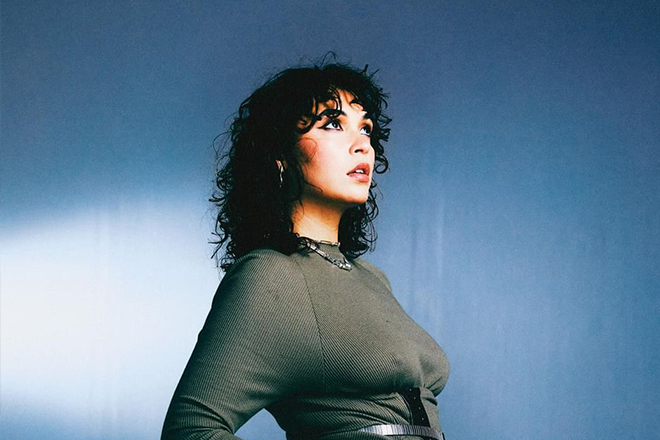
As deejays we are often happy to broadcast our big moments, share our music and to be advocates for causes we believe in but we rarely share the less glamorous aspects of our lives. In April 2023 I had a hearing accident that changed my life. Before you continue, if you've experienced or are currently dealing with hearing damage, please make sure you're in a comfortable mental state to proceed. This article aims to raise awareness and destigmatise harmful assumptions about hearing damage, not to scare you. Remember, hearing issues vary widely, everyone's experience is different and I would encourage you to seek professional guidance if you're facing challenges with your hearing.
Despite growing awareness in this area, I believe preventive measures like hearing protection are widely under-discussed and sometimes still an unfashionable topic. The effects of hearing damage are irreversible, can be sudden, and have a wide range of mentally and physically debilitating symptoms. Hearing damage or loss can occur in as little as 15 minutes but the good news is, it’s easily preventable. All too often people let their body take lifelong damage for the sake of a moment and this simply doesn't have to be the case.
The pain and discomfort of my own experience with this has urged me to try and uphold better practices around hearing protection in the music industry. I want fellow deejays and performers to foster sustainable careers for themselves and others, to care about their health and understand the importance of protecting their hearing. If this can happen to me, it could happen to you – and I really don’t want it to happen to you.
In the grand scheme of things, I am still very early in my DJ career. When I was in highschool I used to perform in bands. I began regularly taking on gigs and lending more time away from studies at university and my day job in 2022. I was spending most of my time digging for music and practising blends at home in my headphones.
I was actively attending events in dance spaces. For a long time I didn’t use earplugs and didn’t think to use them, but eventually the volume levels at parties and how it left my ears feeling afterwards was too significant to ignore. After this, I started to develop anxiety towards sound exposure. I started wearing foam earplugs & even rolled up tissue paper when I was caught off-guard, before buying some over the counter musicians ear plugs from my local music store.
After long days of headphone use or nights deejaying I began to notice low level ringing that would quickly go away. As far as I was aware, this was normal and I was using sound protection more than most. I was constantly encouraging people to use their hearing protection at shows and carried around spare foam earplugs for friends.
I was committed to learning how to be a “good” DJ at this time and felt that using plugs while I was playing hindered my ability to mix, monitor and beat match effectively, particularly when trying to learn vinyl mixing. I felt as though it took me out of the feeling of the music and the energy in the room. To my own detriment I performed without plugs on a regular basis.
The beginning of Claire's journey
In April 2023 I had a hearing accident that changed the way I move through the world. Not only my relationship with music but with sound entirely.
I played a show that was no louder than any other that I’d played before and woke up the next morning with a noticeable and loud ringing in my ears. This was the first time it stuck around. Seven days later I was producing in my bedroom with studio monitors and my ears felt like they popped. They began to feel full and pressurised, and I felt dizzy like I was having vertigo.
I was in denial for several weeks following – thinking it couldn’t possibly be my hearing. I was convinced it was an ear infection. Was it water in the ear? Something else had to explain this. As I was someone who was already clued in on tinnitus, I went and got my hearing tested. My audiologist was extremely dismissive about my symptoms and said that my hearing was totally normal.
I went to another local audiologist, five different GPs, four ENTs (ear, nose and throat doctors), physiotherapists, chiropractors, naturopaths (the list goes on), as I was determined to find answers. I was driving back and forth to Sydney to go to appointments and access specialists that I felt maybe weren’t available to me regionally. Every appointment I left more disappointed, frustrated, invalidated and depressed than the last. Being told that it was in my head, that the only thing I could do was to try to ignore it and learn to live with it.
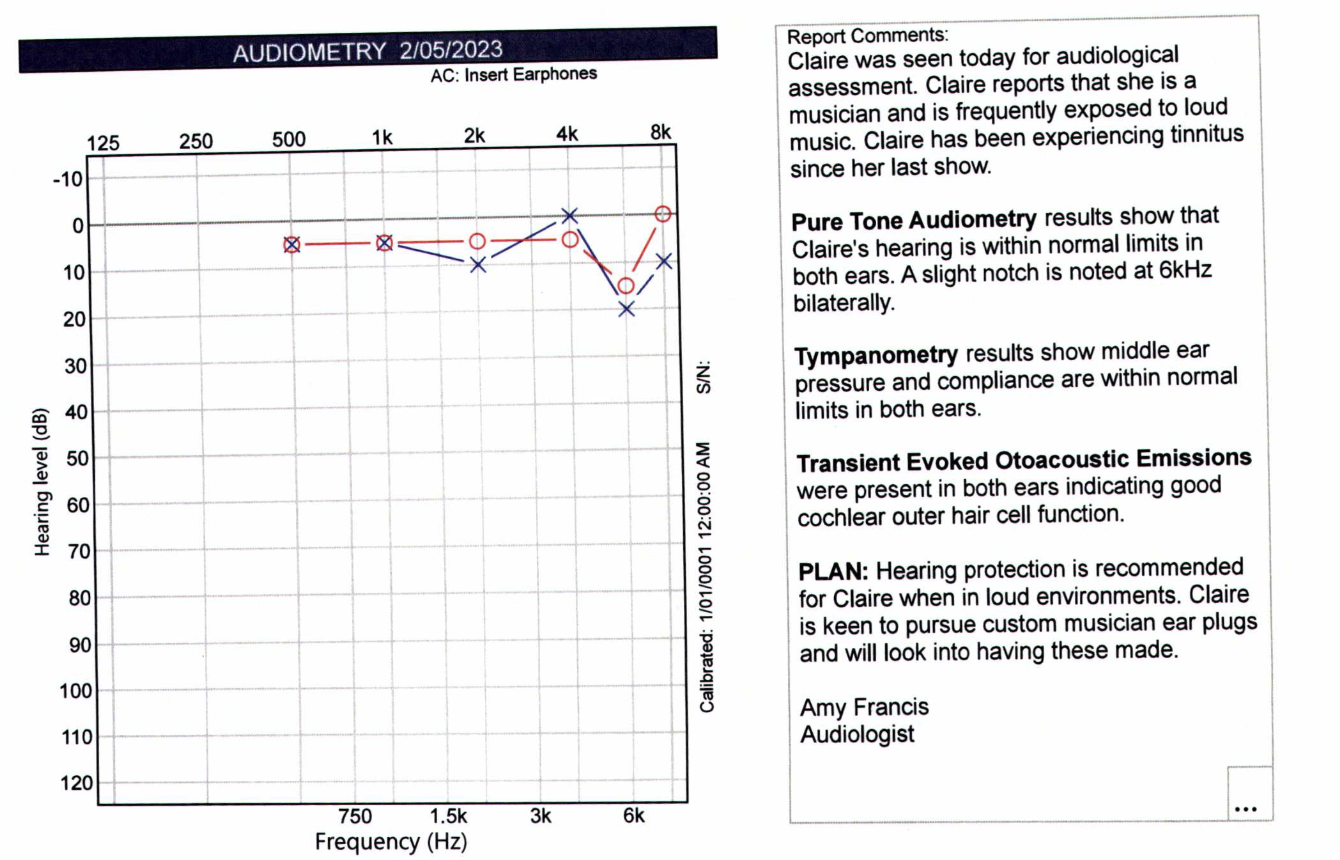
I finally found an ENT specialist who was confident to diagnose me with hyperacusis and tinnitus. Hyperacusis is a hearing disorder characterised by an extreme sensitivity to sound. Everyday sounds that an ordinary person could tolerate can become unbearable. Sounds like washing the dishes, starting the car, closing doors and watching TV began to cause me excruciating pain.
I became hyper fixated on finding a solution. I reached out on social media to see if anyone else had experience with Hyperacusis. I was very lucky that a few people shared their experiences with me but in all honesty it left me feeling terrified. I realised these people were also still struggling and it began to set in that there is no actual “cure”.
My Hyperacusis was so severe I briefly stopped working, moved back home, and shut myself away from the world, my friends, my community and from sound. I couldn’t leave the house without earplugs, and earmuffs on over the top. I couldn’t go to cafes, or anywhere public. I was spending my days doom scrolling through Instagram on my phone with my volume all the way down. Even the sound from my phone speakers was causing me pain. It was awful.
What is hyperacusis and how is it different from tinnitus?
Hyperacusis is a hearing disorder characterised by extreme sensitivity to all sound and is often accompanied by other symptoms. Whereas Tinnitus is simply the ringing or buzzing sound in the ear.
Symptoms include:
- Tinnitus: Ringing in the ears.
- Aural fullness: An uncomfortable feeling of pressure within the ear, sometimes extending to the scalp, face, or neck.
- Thumping or fluttering: Sensation in the eardrum.
- Distorted or echoing sounds: Perception of sounds as abnormal.
- Baseline burning pain: Often described as a feeling of acid, sunburn, or sandpaper in the ear canal, with additional stabbing, jabbing pain upon noise exposure.
Unfortunately, I experience all of these symptoms to varying degrees. All of this made it difficult for me to envision myself stepping back into the world of music again, but slowly, with time and care I was able to safely reintroduce sound back into my life - but within limitations.
___________________
I still live with these symptoms every day but my condition has improved a lot since April last year. Like most chronic health issues, I do have flare ups and setbacks. I am back to playing shows and attending gigs but I have to be really careful, I have to limit my sound exposure and time I spend in loud environments. My ears cannot cope with sound like a normal person's ears would.
I believe what has helped me the most are my super cool hearing aids! My friends and I joke that I am part cyborg. My hearing aids are integrated with sound generator technology. Sound generators are devices designed to provide relief for individuals suffering from tinnitus (ringing in the ears) or hyperacusis (sound sensitivity). They work by emitting soothing sounds, such as white noise or nature sounds, which help to mask the tinnitus also, to desensitise an individual to everyday noises, which is what helped me the most.
Sound generators are often used in sound therapy, where consistent exposure to specific sounds can help manage symptoms over time. They feature adjustable volume and various sound options to cater to individual needs and preferences, making them a versatile tool in managing auditory discomfort. I wear these 24/7 except for when I am in water or when deejaying.
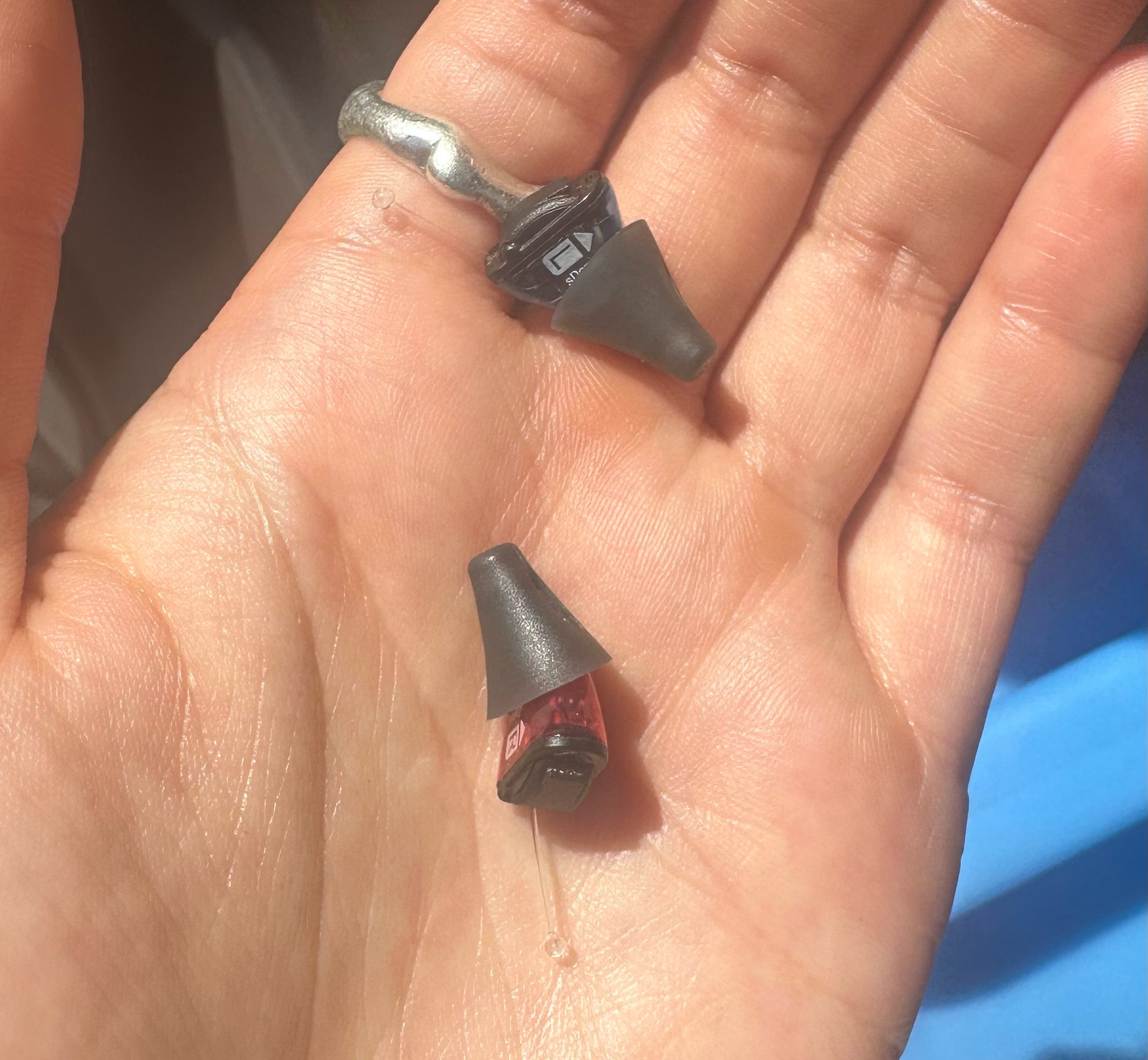
My hearing aid sound generators I wear everyday :33
Some things that have helped me significantly include sound therapy, pink noise, psychology, and Cognitive Behavioral Therapy (CBT). The goal with all of these approaches is to habituate your brain to normal levels of sound through gradual and consistent exposure. Sound therapy and pink noise provide soothing background sounds, chiropractic care addresses physical alignment, and psychology and CBT offer strategies to manage the emotional and cognitive aspects of sound sensitivity.
My CBT experience with my psychologist was tailored to help me reframe my thoughts about tinnitus. It involved engaging in mindfulness and breathwork, during which I would repeat statements such as:
- "Tinnitus is just a sound and it cannot hurt me."
- "It doesn’t help me to check on tinnitus—it is always there."
- "I’m learning strategies to manage tinnitus."
If you’re experiencing tinnitus give this a try - you can write your own statements similar to these!
The primary focus of this therapy was to help me accept the presence of tinnitus and detach the negative connotations associated with it. While I still struggle with my tinnitus, these practices have significantly helped in improving how I cope with it daily. Additionally, feeling prepared to return to club environments safely has contributed positively to my overall well-being. It helped me reduce my anxiety around noise by being in one of the loudest environments possible.
How loud is too loud?
Exposure to noise for safety purposes is measured in both volume and time. Noise levels are quantified in units called decibels (dB), which measure sound pressure levels.
The Occupational Safety and Health Administration (OSHA) has set permissible exposure limits to protect against hearing loss. According to OSHA, the maximum permissible noise exposure before the risk of hearing damage begins is 90 decibels (dB). At this level, you can be exposed to sound for up to 8 hours without significant risk of hearing damage.
As the decibel level increases, the duration of safe exposure decreases rapidly. For every 5 dB increase, the allowable exposure time is halved. For example: at 95 dB, the safe exposure time is 4 hours. At 115 dB, it's 0.25 hours (15 minutes) or less.
To understand how my hyperacusis affects me in relation to this, I start to experience pain and discomfort around 85-90 dB.
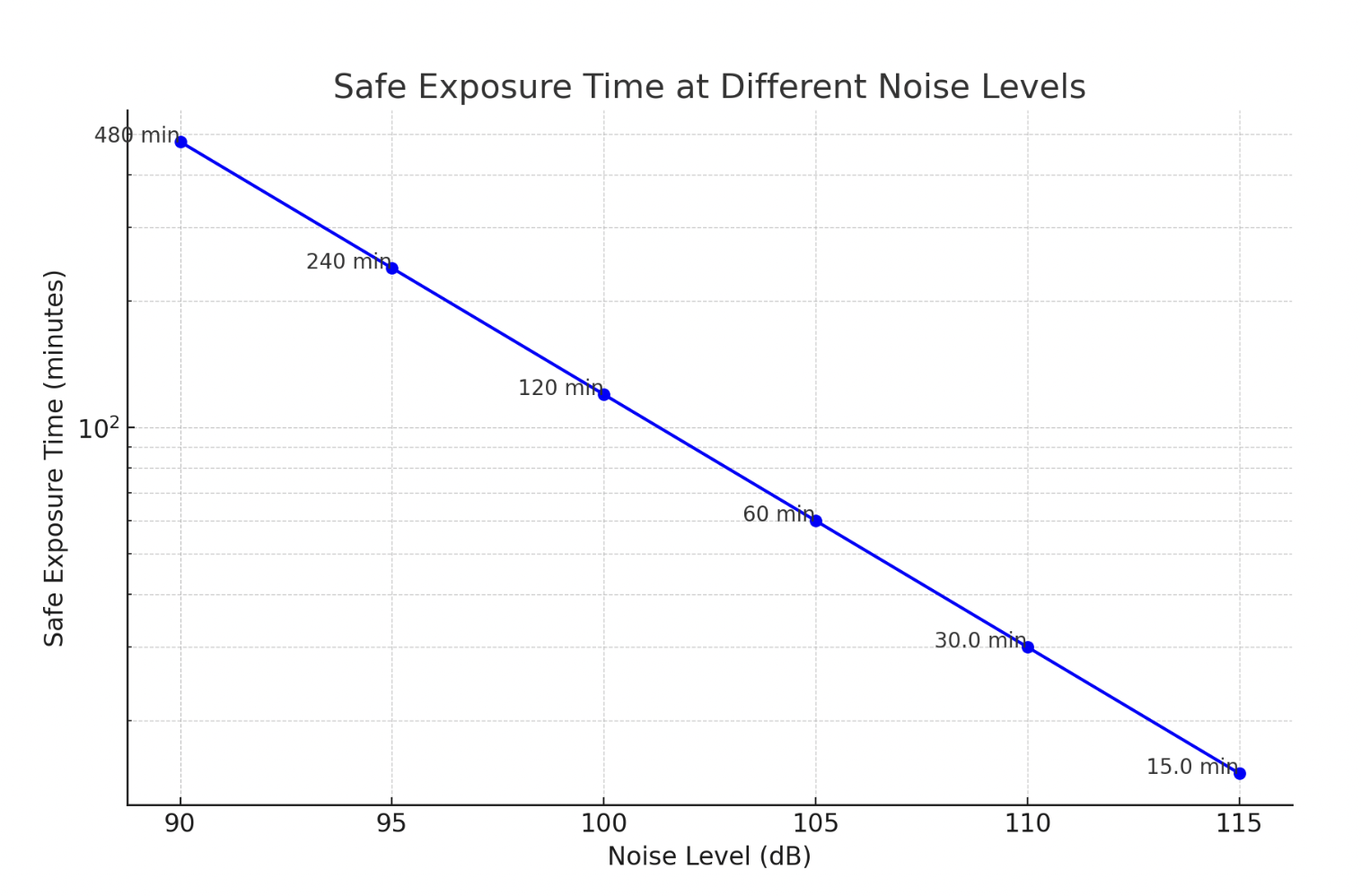
Here's a graph showing the safe exposure times at different noise levels in decibels (dB). The y-axis represents the safe exposure time in minutes, and the x-axis represents the noise levels in dB. Note that the safe exposure time decreases rapidly as the noise level increases. This is helpful for understanding what you can tolerate.
Most nightclubs have noise levels around 110 dB, which means on average on a night out, you have half an hour before you are causing hearing damage.
A good rule of thumb for staying safe is that if you need to raise your voice to speak to someone over the music, it is too loud and you should put your hearing protection in. Alternatively, a dB reader app on your phone is an excellent option.
Below: Claire's “dB Meter” app on her phone.
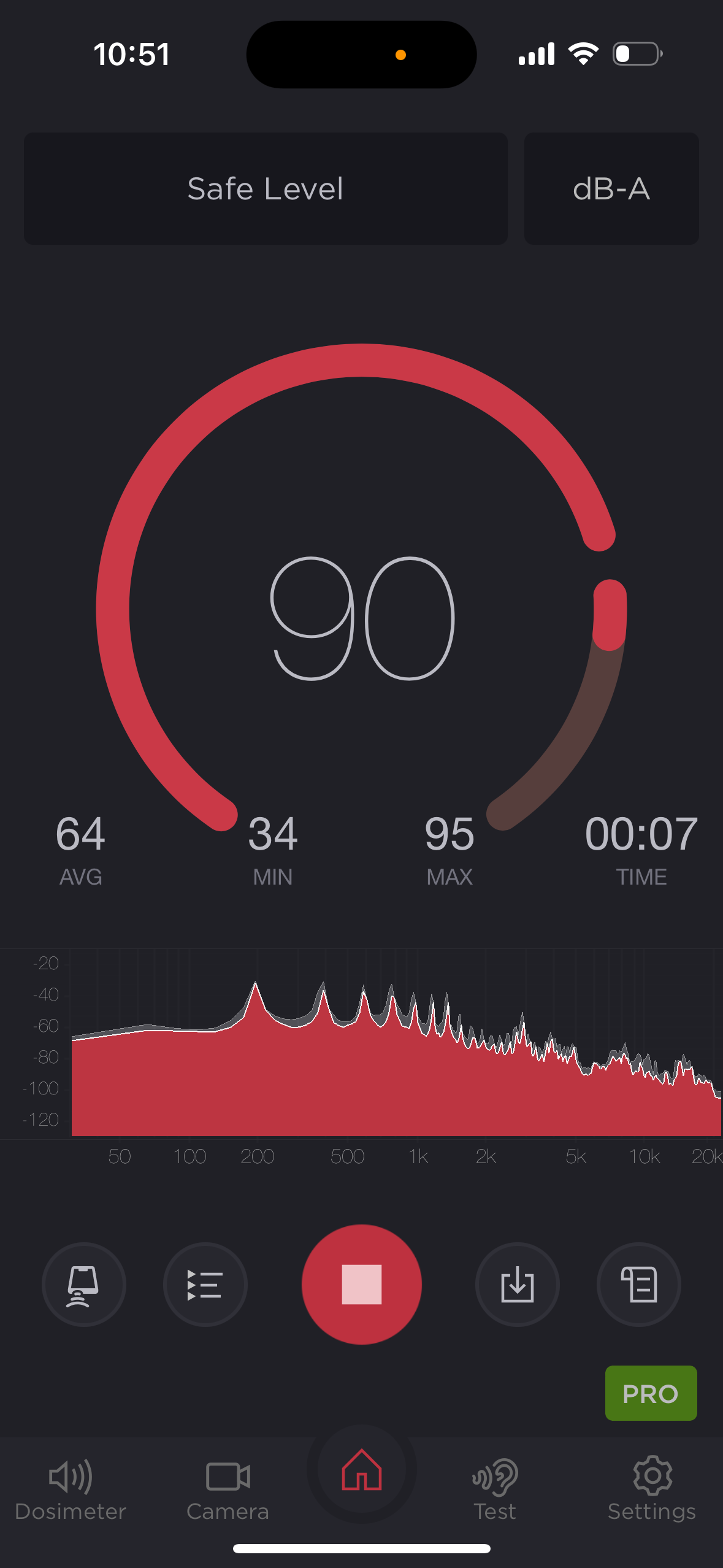
What earplugs should I buy?
Earplugs reduce sound intensity, allowing you to safely spend more time in loud environments. They decrease noise by about 15 to 33 decibels, depending on the type, which helps keep exposure within safe limits. For instance, If you are in a club that is 110 dB, and you have an affordable pair of earplugs like Sets, which lower sound by 23 dB, you can, in theory, have safe exposure to that level of sound for 8 hours. Without earplugs, you only have 30 minutes before you begin to sustain irreversible hearing damage.
For live performances, consider using musician moulded earplugs. These earplugs provide effective hearing protection while maintaining sound quality. Unlike regular earplugs, which can muffle and distort sound, musician earplugs attenuate harmful noise levels evenly across frequencies. This allows you to hear your music and surroundings clearly, ensuring accurate performance and communication on stage.
Sound filters in earplugs reduce incoming sound volume while preserving audio clarity. Earplugs offer different dB reduction levels: low (e.g., 10 dB) for quieter environments, moderate (e.g., 17 dB) for concerts or clubs, and high (e.g., 26 dB) for very loud settings. These options allow users to protect their hearing appropriately without compromising sound quality, making them ideal for musicians and anyone in noisy environments.
Most people I know use earplugs with -10 dB or -17 dB filters while deejaying, providing adequate protection while allowing them to hear the music effectively. If you’re on the dancefloor, you could use higher protection than this. My sensitivity necessitates the use of higher attenuation earplugs with -26 dB and -33 dB filters. I always recommend the ACS Pro 17 Custom Earplugs or the PACS Pro 17 to artists who wish to play with plugs in.
Below: PACS Pro 17 with filters & ACS Pro 17 with filters
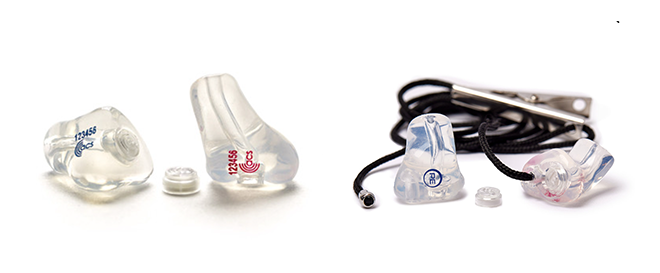
Key takeaways, information and advice:
Know Your Limits
Deejays and punters often find themselves in environments where the noise levels can reach around 110 decibels (dB). According to OSHA (the Occupational Safety and Health Administration) guidelines, exposure at 110 dB should not exceed 30 minutes per day to prevent hearing damage. Understanding this is so helpful for knowing what your ears can tolerate and to be realistic with the time you’re spending on the dancefloor.
Deejay With Custom Earlugs + Filters
High-fidelity earplugs designed for musicians and DJs offer flatter attenuation, which doesn't just reduce the volume but does so evenly across all frequencies. This allows for a clearer, more natural sound experience. This preservation of sound quality helps you focus more on the essential aspects of the mix and beatmatching, enhancing your ability to perform without compromising your hearing health.
Initially, using earplugs while deejaying was a challenge for me. However, I've come to appreciate how the flat attenuation helps me really hear what's happening in the mix, and cut out all the other noise in the space. It also reduces my anxieties around hearing damage because I am reassured I am protected - it has gotten easier and I prefer it!
If you are finding it difficult to mix with earplugs in, I would suggest wearing your earplugs into the club and not taking them out. Practising at home with them is also a good tip!
Watch Your Levels
Using a dB metre in the DJ booth is crucial for accurately managing sound levels and safeguarding your hearing. It's particularly important as DJs often crank up their booth monitors beyond the volume of room speakers. We are often surrounded by high sound levels from various sources: the sound of the room, headphones and your booth or feedback.
Also, be mindful of the volume output to your headphones. For instance, when I tested my Sennheiser HD-25 headphones and also AIAIAI TMA-2 DJ headphones with a Pioneer V10 mixer, the dB metre showed peak levels between 116-120 directly at the headphone speaker. So it's important to be mindful of how all these factors can compound.
Communication
Clear communication and firm boundaries with promoters and sound teams are crucial for safeguarding your hearing during performances. By clearly specifying your sound level requirements, you not only prevent hearing damage but also ensure that the audio environment is tailored to your performance needs. For example, I make it a point to discuss my sound preferences with promoters before committing to any gig.
My technical rider explicitly states the need for an adjustable booth to keep sound levels under my control and maintain my comfort. I stand firm on not performing if these conditions are not met.
Any good sound team or promoter will understand and respect these requirements, as they are essential for protecting your hearing and your health. It is also worth noting that having these specific requirements hasn’t prevented people from wanting to work with me.
Stop listening to your music so loud in the car!
When you're not at work or attending events, it's important to protect your hearing.
Exposing your ears to loud music, shows, or podcasts can be harmful. Consider reducing the time you spend producing in headphones and switch to using monitors, or opt for open-back headphones as an alternative. Be mindful of your overall sound exposure; our ears aren't built to handle the high volume levels produced by modern technology. Taking these precautions can help preserve your hearing health.
Regular Hearing Check-Ups:
Regularly checking hearing ability can help catch any early signs of hearing loss, allowing for timely intervention.
Final thoughts
Sharing the story of my hearing damage has been both eye-opening and deeply challenging. Looking back, I wasn't reckless or uninformed about protecting my ears, yet here I am. This goes to show that this could happen to anyone, really highlighting the importance of awareness and taking precautions. Even though I still have issues with my hearing today, I've managed to find ways to help myself significantly. I didn’t stop searching for answers, even when help seemed out of reach. To those who are navigating similar paths, keep advocating for yourselves and seeking the support you need. Together, by sharing our experiences and solutions, we can promote an industry that helps everyone take better care of their hearing.
-
The research in this article has been undertaken by the subject & is not intended to be a full replacement for medical advice.
Find Claire O’Brien on Instagram.
Jack Colquhoun is the Managing Editor of Mixmag ANZ, find him on Instagram.


